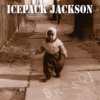![]()
The Basic Needs of an Online Radio Station
There are three tiers for radio stations online. The first belongs to mega-corps: Pandora, iHeartRadio, Apple Music Radio, Spotify, Radionomy, Google Play Music, Rdio, etc. These are the companies with so much capital and technological know-how that they set the industry's pace and dominate ad revenue.
Tier 2 contains the larger stations. They have investors, adequate technology staffs, and visions which carry them through today's constantly changing audio environment. Names like Live365, Accuradio, NPR, Digitally Imported and Sticher are included in this short listing of approximately 25 contenders.
Then there's our Tier 3 stations. Nearly all are "Enthusiastic Amateurs." Low audience numbers coupled with lower - to non-existent - revenue is the thread running through this group. Content has its heart beating from the programmer's desire to do whatever is thought to make "good radio." More often than not, that means playing music with an ID stuck in every few songs. The common thread in this group? Content is void of elements found in a professionally run operation - consistency in quality production, content topic/music, and scheduling.
|
Tier 1 controls, and will continue to control, the vast majority of advertising dollars and consumer attention. Tier 2 will become the alternative to group one, depending on how fully each company embraces better programming and analytics than is offered by Tier 1. This will take time as most all are still offering programming and advertising packages tweaked slightly from the broadcasting models. |

|
Tier 3 stations will continue to grow but, as I once described, they will prove more a nuisance to the others than true competition: "The radio industry chiefs are swatting at independent radio stations, attempting to shout louder. They have radio industry trade magazines to preach to the choir, but about what? What is it that the radio industry has accomplished online that's worth shouting about?" With this lack of content creation from both sides comes limited opportunity.
In October 2009, The Wall Street Journal ran an article stating why Tier 3 will grow: "On the Web, Amateurs Rivaling Professionals."
The elements all Tiers need are simple to describe, and complicated to produce.
Too often today what is found at your online station web site is far more than is required. Conversely, what's in the stream contains less than consumers want.
Basic needs are the creation of an image for what a station represents, maintaining elements that are not easily found elsewhere within the audio (or site graphics), and sustaining a schedule an audience member can rely on (updated and/or deleted to maintain credibility).
I recently placed six more stations on the home page of Audio Graphics' RadioRow.com. As has been the case each time since I began doing this in 1999, the majority's of these station's home pages contain far more clutter than a consumer wants to find. Few stations have easily found statements identifying what they represent. Even fewer start their audio automatically - forcing the audience to take one more step to uncover its product.
The majority of us are Tier 3, limiting what we can do through technology or programming. Nothing will change in this sector. As has been the case, these stations come and go with high frequency.
Tier 2 companies have the most to gain from plowing headfirst into R&D, identifying audience and advertiser basic needs and focusing on improving them.
Tier 1 are not the lucky ones; they are just the biggest. Of course, this brings a different set of problems, but their employees have skill sets to find solutions. What will hold some back is the depth of top manager's knowledge on the internet's potential. There's a simple question to find which of these fit this description: How many of these companies' top execs have active social media accounts, or understand the nuances of ad insertion, analytics and geo-targeting?
The basics no longer depend just on programming and selling impressions.
Find the answer to the above question and you'll uncover those companies that will still be operating in 2020.
Tuesday, August 25, 2015

Today's artist introduction is to Blues from IcePack Jackson.

Give "Internet Blues" a listen.
Stations: Add it to your playlist, free.




